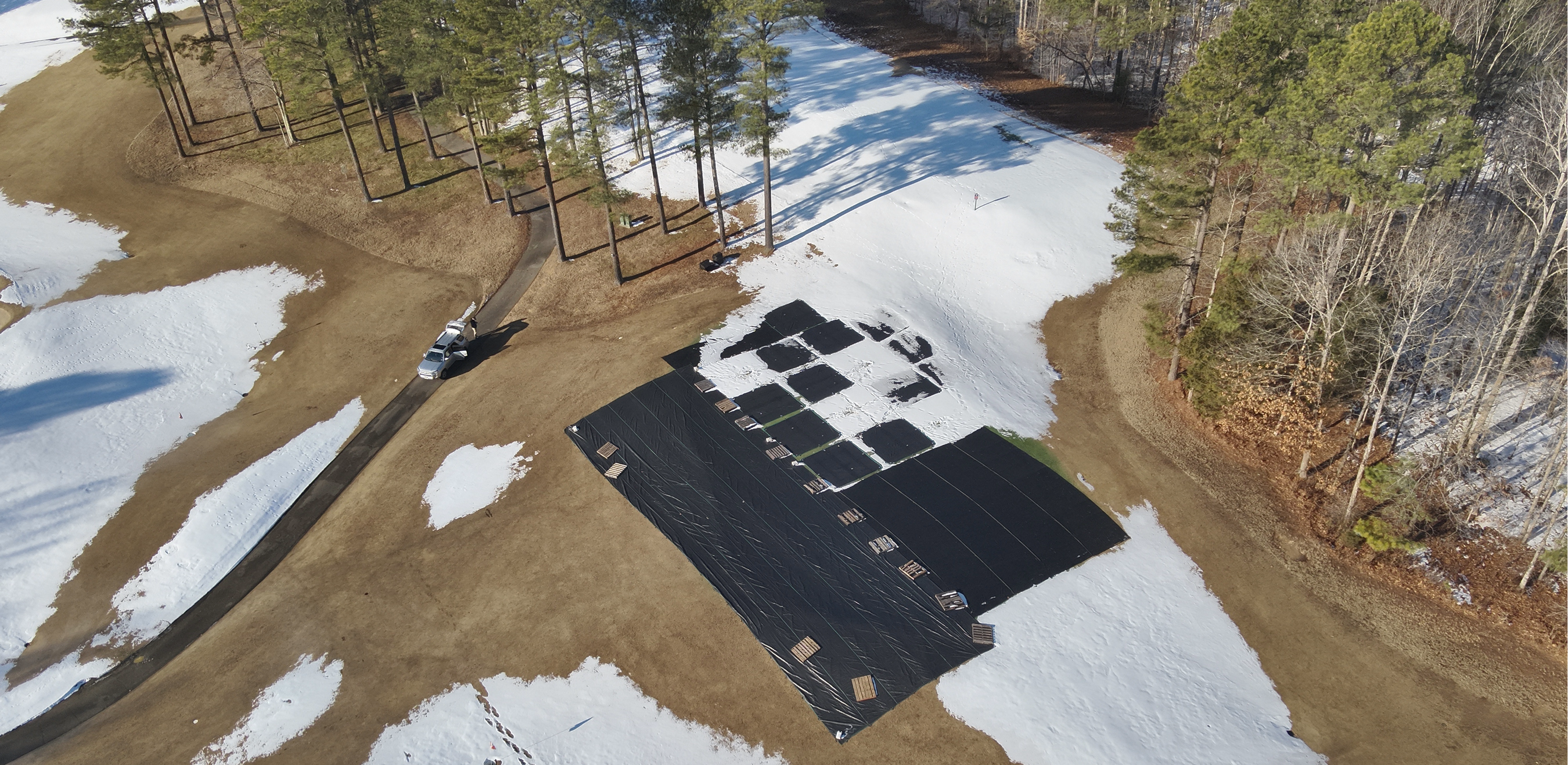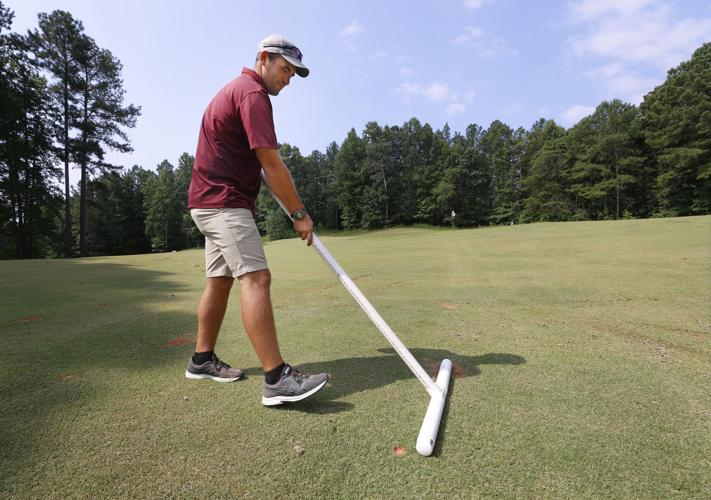
Promising Research: Water Conservation & Winterkill
May 24, 2023
Working with a course at Independence Golf Club, Travis Roberson is conducting important research on water conservation using Spiio in-ground sensors, drones and light reflectance. He hopes to gain important insight into how Spiio sensors can be used for water conservation and winterkill prevention.
Spiio, Roberson, Virginia Tech and Independence Golf Club team up
When Roberson finished his undergraduate research at Virginia Tech, his advisor, Dr. David McCall, introduced him to his research using light reflectance for water conservation. After gaining some foundational knowledge and experimenting with some of his advisor’s equipment, Roberson was hooked.The connection to a golf course was incidental. “I had never played golf,” says Roberson. “I loved the agronomy, the science, and I got introduced to golf from the first job I ever had.” Roberson had once worked as a greenkeeper, which is where he learned the critical lesson of incorporating data into management decisions.
"I loved the agronomy, the science, and I got introduced to golf from the first job I ever had."
That brings us to 2017 when Roberson was at Virginia Tech’s main campus in Blacksburg doing greenhouse studies, looking at using the same technology through intensive drydowns. McCall and Jordan Booth, Travis' predecessor, partnered with Giff Breed, president of Independence Golf Club, to use the Bear research course at Independence for real-world research. When Booth left to work at USGA, Roberson picked up where he left off.

Roberson came across Spiio at an industry conference and was interested in how the sensors could enhance his research. Roberson requested some sensors, and another partnership was born. Independence Golf Club installed 60 Spiio sensors in early May in their greens.
Water conservation gains from Roberson’s research with Spiio
“One issue that we have with the research I’m doing using drones is that we need a real-world way of using the data,” notes Roberson. “The optimal way would be that data would automatically inform the decision about when and how much to water, and then do it. But we’re not there technologically.” Roberson hopes that Spiio sensors will help bridge that technological gap.
"The optimal way would be that data would automatically inform the decision about when and how much to water, and then do it."
The first area of opportunity for Roberson's research is water. Roberson points out that “water is the most limiting resource for the planet. Everything depends on water.” He also notes that “because golf courses are in the agriculture field but are there for leisure (rather than food or another necessity), using excessive water for turf quality preservation can be frowned upon, especially in a drought.”

In addition to growing concerns about climate change, drought and other environmental factors, water conservation is crucial because water is such a key part of managing healthy turfgrass. Water determines nutrient uptake, basic survival and the appearance of any plant. However, those in turfgrass management know that you can overdo it. Overwatering wastes money and causes disease, weed growth and other problems that cost even more to treat.
"Using excessive water for turf quality preservation can be frowned upon, especially in a drought."
One question Roberson has going into the Spiio partnership is how to determine optimal placement of the sensors. Right now, the best way to decide where to place them is based on the superintendent's historical knowledge of the wettest and driest areas. Roberson hopes he can also use data to determine placement. The most water consumption typically occurs on fairways, which is where Roberson's research is focused.
Additional insights on winterkill and soil temperature monitoring
Another major research objective that Roberson aims to utilize Spiio for is winterkill. Winterkill is an important research area for Independence Golf Club because it is a huge issue in the transition zone. “Greens are a lifeline,” states Roberson. “Lose those, and people lose jobs. We get cold enough that the greens in the top few inches are sand-based and fluctuate a lot in temperature. Bermuda grass is not adapted for severe temperature fluctuations we tend to observe in the transition zone; which can lead to potential death of the plant .”

Professionals combat winterkill by using covers to retain warmth and keep greens alive. However, revenue is lost when you have to keep greens constantly covered. Spiio sensors track soil temperature continuously, making them optimal for winterkill research since soil temperature cannot be taken when the greens are covered. Roberson plans to install sensors under makeshift covers to track the minimum temperatures and find out exactly when you need to cover to prevent winterkill.
"From what I’ve seen with Spiios so far, and assuming we’re able to collect the data we’re looking for — I think they’ll provide significant reductions in water usage."
Roberson is optimistic that the results of this project will be positive. “I don’t have data to support this yet, but I think — from what I’ve seen with Spiios so far, and assuming we’re able to collect the data we’re looking for — I think they’ll provide significant reductions in water usage. I also think we’ll be able to use these sensors to provide input, in real time, on when to cover and not to cover. As we tease out the data, I think we’ll be able to notify golf course superintendents within hours of when they need to cover."
